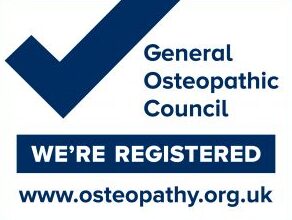
Running is addictive, there’s nothing like the buzz that you get from putting one foot in front of the other for miles and miles, it feels great. But is pounding the streets the best way to improve your running?
Most runners aim to improve their running by running. They might vary their speed and distance and even do a bit of interval or high intensity training but does this cover all the bases?
To be a good runner you need to have mobility, strength, and endurance. The mobility needs to be specific to how the body moves when you’re running, the strength needs to be specific to how the body moves when you’re running, and the endurance needs to be specific to how the body moves when you’re running. And I know it’s surprising but you won’t get this by running!
Often runners can lose the mobility they need for running in their ankles by running, they can lose the flexibility they need for running in their calves and hip flexors by running, and they can lose the strength they need for running in their gluts by running.
You could do yoga for your mobility but does yoga move your body in the same way running moves your body?
You could lift heavy weights for your strength but does weight lifting move your body in the same way running moves your body?
Ok running is pretty good for endurance specific to running, I’ll give you that.
Assessing the body’s mobility, strength, and endurance will give you a good idea of how your body is performing. Then you need to compare the outcome to what’s needed for running. Movement analysis can identify how the body is performing, and then a deep understanding the of the biomechanics of running can be used to find how to make your body regain the mobility, strength, and endurance needed for running.
The mobility, strength, and endurance needed for running is different from the mobility, strength, and endurance needed for throwing, playing golf, or hitting a tennis ball therefore the training needs to be different.
If your ankles are stiffer than is efficient for running, specific exercises (that look similar to running) can regain that movement and then your body will move more efficiently during gait. These exercises will mean the ankles naturally move the way they should without any thought or effort.
These exercises can look different for each person as each body responds differently.
Every movement of the body is a chain reaction. It’s a bit like that nursery rhyme: “The foot bones connected to the leg bone, the leg bones connected to the thigh bone…” Any and every movement has a knock on effect throughout the entire body, so what happens at a particular joint is dictated by what has happened at the joint above and the joint below it. When the heel strikes the ground this causes a chain reaction of movements all the way up the leg to the hip and back. The subsequent motion at the hip and back cause the gluts to fire and propel the body forward. Therefore the foot hitting the ground eventually causes the gluts to switch on. To phrase it another way; the body is propelled forwards because the heel hits the ground.
To run faster over a long period of time we need to improve the body’s efficiency and the best way to do that is to work on your unique body’s weakest link. This is the area of the body that doesn’t do it’s part in the chain reaction as effectively as it could do.

Top tip no. 1: Ankles
Ankle mobility is often poor in runners, probably from all those miles pounding the pavements. Keep the ankles loose with these exercises before and after running:
Top tip no 2: Rotation
If you look at someone running from above you will see the huge amount of twist and rotation that the body goes through during gait.
The motion at the trunk is driven by the arms moving forwards so we need to consider how the thoracic spine aka the “upper back” is functioning. Often runners are stiff in this area, especially if you’re stuck in front of a computer during the week. Keep the upper back loose with these exercises before and after running:
Top tip no 3: Balance
The body loves to be limber. It’s great to feel mobile and flexible but the body interprets uncontrolled mobility as instability and instability is risky for the body. This is why you can’t work on mobility without working on stability and vice versa. They play into one another to make the body function better and running sustainable for longer.
Normal walking gait involves having one foot in the air 80% of the time and for running this is even higher so single leg balance is important. Remember thought that running is dynamic therefore the single leg balance exercises must also be dynamic. Hint: Standing on a wobble board doesn’t cut it.
Keep tip top running specific balance by doing these exercises daily:


